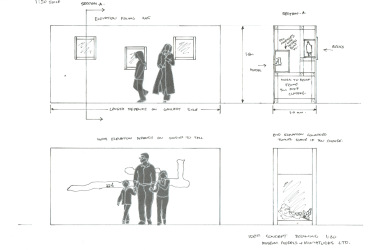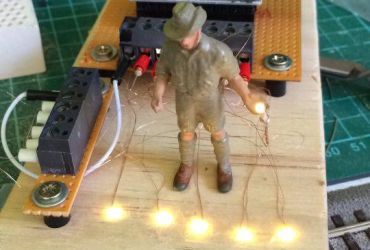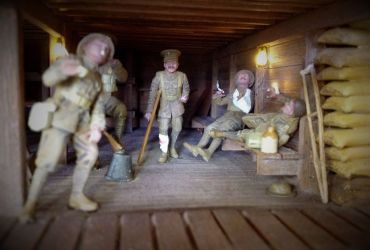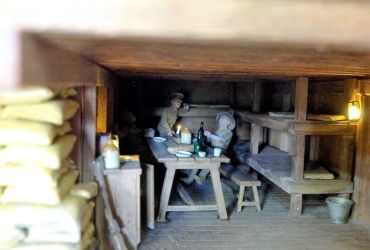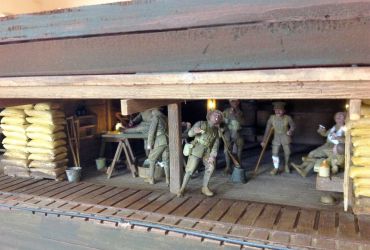WW1 Tunneling Display Scale Model Diorama Contract For NAM
As part of the WW1 Centenary, NAM was having a photographic exhibition called 'Going Underground' which would include some of the Museum's related artefacts. During a visit to NAM by the team at HRD to discuss the Food Glorious Food model requirements, it was suggested by us that the use of a model may be beneficial in the Tunnellers' exhibition. The response was that perhaps we might like to consider the viability of such a display, and make further contact when we could supply firm plans, ideas, and costings.
The team at HRD spent a long time researching this historically and functionality wise, as the budget for this as a support to an already planned exhibition was an important factor. Scale was also an important factor; it needed to be big enough to show interesting detail, but small enough to fit the available space in the gallery chosen. A large part of the model was portraying the tunnels themselves, which were extensive, and the tunnellers at work, so there would be many scale figures involved. To meet both the financial and spatial constraints the best solution was to use existing military model figures in a smaller scale and adapt them to suit the activities and poses necessary - instead of going down the individually sculptured road, which added both cost and timing issues. We also researched a technical chip operated lighting system which represented different light sources, their brightness and modulation. After experimentation, we felt certain we could supply this in a realistic form; candles, gas lamps and basic WW1 electric lighting at a very small scale. And so, armed with the research, concept plans and a costing outline, we agreed to meet with NAM staff and discuss the proposal further. Our proposal included the full scale tunneller described as a separate project on our projects page.
The team at HRD were commissioned to supply all the above in modular form and install it in the gallery within a timeframe set by the Museum, in line with the exhibition's deadline.
The work began with building strong plywood box modules which could be firmly fixed together with our engineered fixing systems you will see in one of the photos below, to house each part of the tunneling display. Then removable inserts were created for each module, so that part of the model could be worked on separately on the bench, not in its place in the total model. Many silicone moulds were made for various components in preparation for the detail build of the interior of the tunnels. The structures that made up the inside of the tunnel system throughout were then constructed to scale and fitted to the model and undercoated. The figures were chosen and remodeled to fit there particular role and location and then painted. The tunnels themselves were painted and the lighting was installed and wired up in the modules. Finally, the figures were put in place and it was ready for transport to NAM.
On site, HRD reconnected the wired modules, acrylic was fitted to the faces of the tunnels and then a coloured skin of MDF was fitted to the completed boxes, so you looked through a section slice of the Western Front landscape. At this stage our part in the exhibition was completed and Museum staff carried on and mounted the artefacts which were included in the display.
This was a large build and install contract for the team at HRD and it went extremely well. It was displayed in a darkened gallery space to imitate a tunnel and this highlighted the tunnels in the model. The subdued model lighting attracted closer inspection by visitors. This in itself brought a greater awareness of the men who fought their war out of sight and down deep in the ground.
